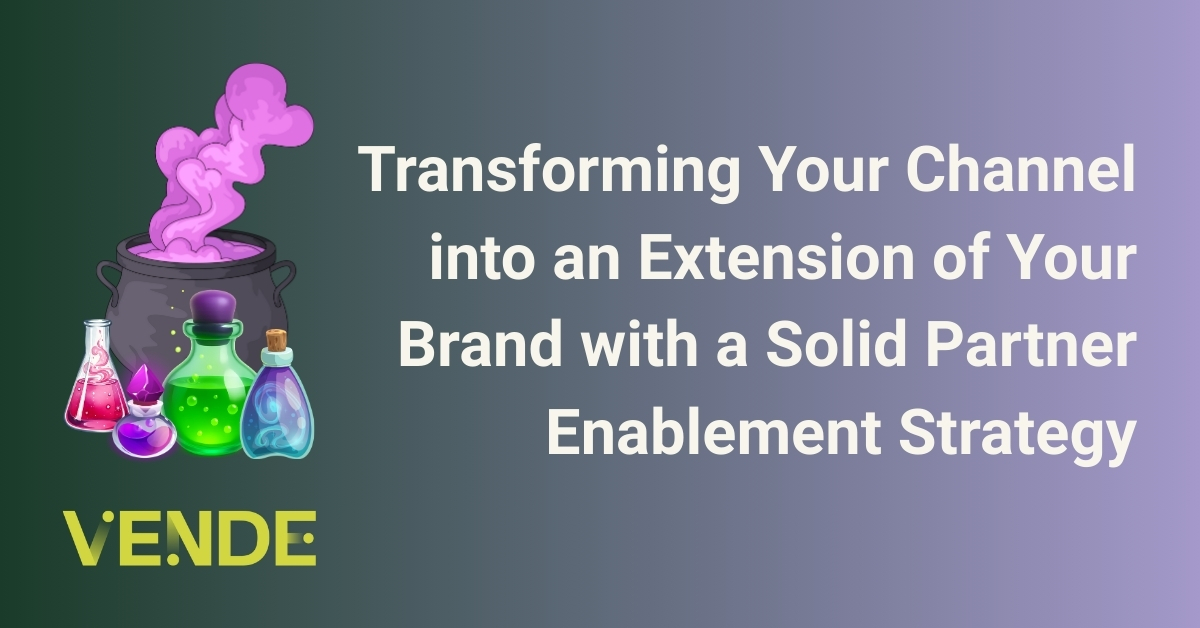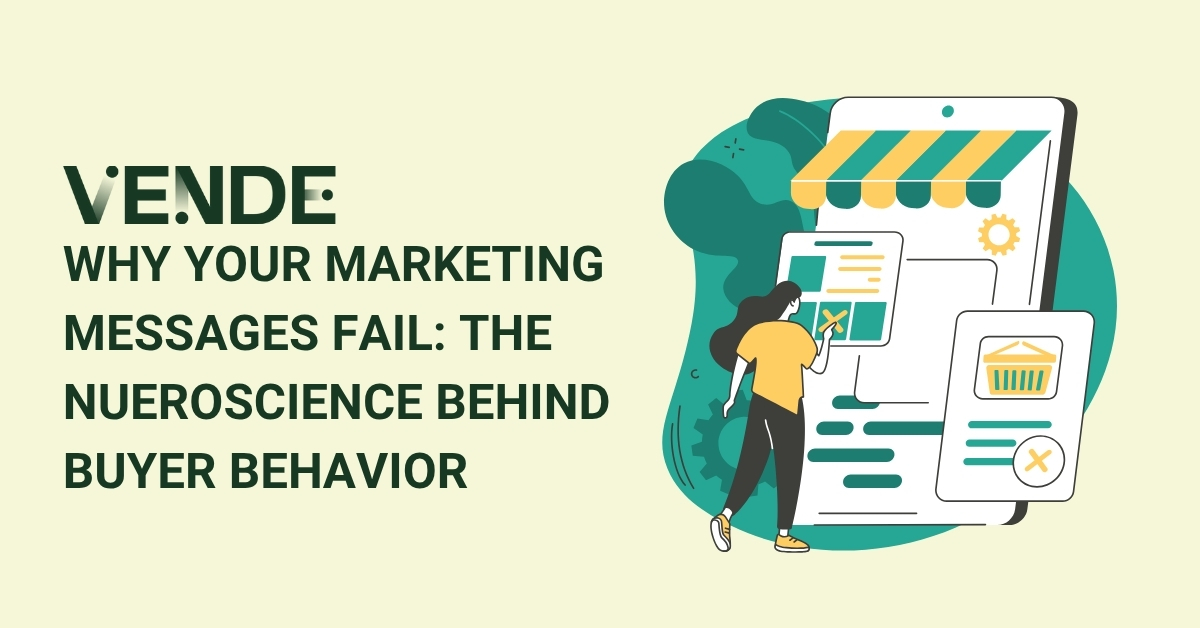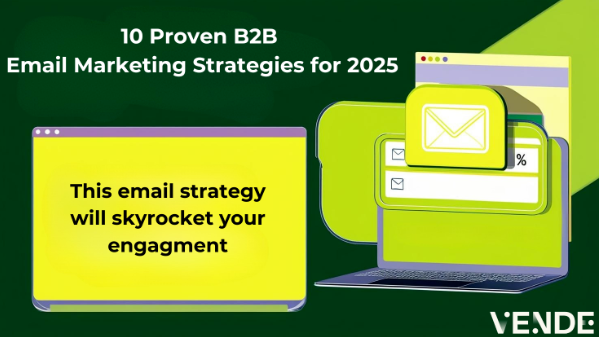
10 Proven B2B Email Marketing Strategies to Boost Engagement in 2025
B2B email marketing isn’t just alive—it’s thriving. With shrinking organic reach, rising ad costs, and data-driven audiences, email remains a marketer's most powerful tool. But let’s face it—outdated tactics won’t cut it in today’s crowded inboxes.
If your emails aren’t stopping the scroll, it’s time for a reset. This guide shares 10 expert-approved strategies to crush B2B email marketing in 2025. We’re talking actionable tips you can implement ASAP, plus what’s working now (and what’s best left in 2018).
Want more? Don't miss the replay of our demand gen jam session featuring email marketing expert Jay Schwedelson, the mastermind behind SubjectLine.com and host of the popular Do This, Not That podcast. From subject line trends to boosting open and click-through rates, Jay delivers insights that will transform your 2025 email strategy.
Q. How can I improve B2B email marketing engagement in 2025
Want better B2B email engagement in 2025? Try double personalization (yes, they really do appreciate the extra attention), snappy subject lines, CTAs that actually pop, weekend sends (who doesn’t check emails on Saturdays?), AI analytics to do the thinking for you, and a sprinkle of FOMO with exclusive offers. Boom—emails they’ll actually open.
Before we dive in, let’s do a little soul-searching. Think about your last five email campaigns—did you A/B test anything meaningful, or are you still winging it? Be honest: how many clicks did those CTAs actually drive? We’re not just here to point fingers (okay, maybe a little); we’re here to help you turn those lackluster metrics into proof that email marketing is still king. By the time you’re done reading, you’ll have a playbook packed with strategies guaranteed to make your open rates (and your boss) happy. Let’s get started.
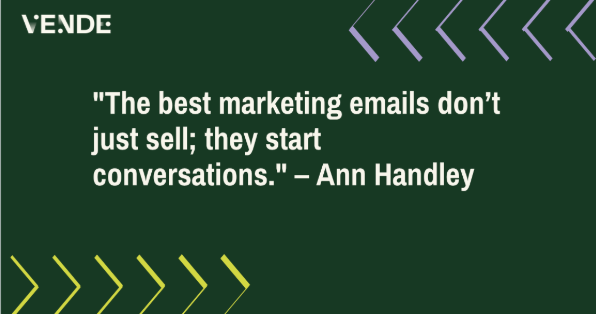
3. Stop Saying “Register” – Your CTAs Are Boring
The word “Register” is a snoozefest. Your CTA should excite, not command.
"Register Now" and "Download Now" are bland, self-serving CTAs that focus on what the organization wants rather than appealing to the prospect's desires. Strong CTAs should have energy, relevance, and a sense of ownership that speaks directly to the prospect. It's similar to how your emails should be buyer-centric, not company-centric, more on that here.
For example, a CTA like "I want in" feels more personal and engaging, tapping into the prospect's enthusiasm and making them feel like an active participant in the process. This shift from a generic, organization-focused action to a prospect-serving CTA can make all the difference in driving meaningful engagement.
Better Options:
- ✅ “Save My Seat”
- ✅ “I Want in”
- ✅ “Send Me the Insights”
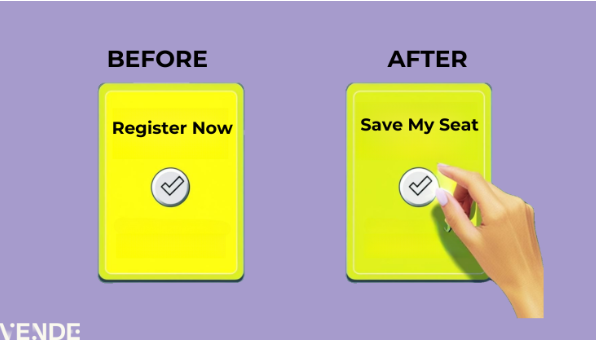
Why It Works:
First-person CTAs (“I Want...”) make the action feel personal and intentional. This approach creates a stronger connection with the user, encouraging them to take action.
🚀 Try This: Look at your CTA buttons. Rewrite them in first person and see if your click-through rate increases.
4. Test Weekend Sends
Conventional wisdom says B2B emails perform better midweek. But 2025 trends show Sundays outperform weekdays in certain segments.
Weekend emails = less competition + higher open rates.
Why?
Decision-makers catch up on emails over the weekend when Slack isn't dinging and meeting invites aren't piling up. Weekend email CTRs in B2B have increased 62% YoY.
This trend challenges the traditional approach to B2B email marketing and presents an opportunity to reimagine your strategy. Leveraging weekend sends for follow-ups or nurturing leads could help build stronger connections. For instance, a well-crafted email sent on a Sunday afternoon might serve as a valuable touchpoint, reinforcing your brand while staying clear of the weekday clutter.
Continuously monitoring performance metrics, such as open rates, CTRs, and conversions, will help fine-tune these weekend experiments and ensure long-term success in capitalizing on this emerging trend.
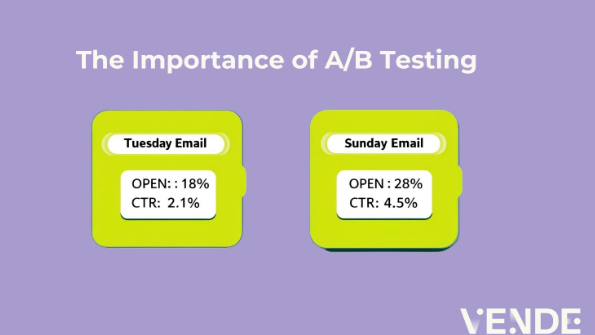
🚀 Try This: A/B test your next campaign by sending 50% of your list emails on Tuesday and 50% on Sunday. Compare open rates.
5. The “Attend to Receive” Webinar Promotion Model: Because No One Watches On-Demand
Everyone promises an "on-demand replay," and no one watches it. We promise ourselves we'll watch the replay, but replays are just that thing we save and never open. Next time you're preparing webinar email promotions, inject urgency and drive live webinar attendance by offering exclusive live perks and attend to receive goodies like live Q&A or surprise giveaways. Make your prospects feel like they’ll actually miss out if they don’t show up.
Examples:
- ✅ “Live attendees receive an exclusive Q&A transcript.”
- ✅ “First 100 sign-ups get early access to our product roadmap.”
Here’s a tip: Take your average attendance, double it, and use that number as the cutoff for early registration perks. This way, most attendees will still receive your materials, but you’ll create a sense of urgency to register early.
Why This Works:
The psychology of FOMO (Fear of Missing Out) drives registration rates by 40% and live attendance rates by 35%!
🚀 Try This: Promote an upcoming webinar with an “attend to receive” model. Highlight the unique value only live attendees get.
6. Win-Back Emails That Don’t Sound Desperate
The dreaded “We miss you!” subject line feels clingy–this isn't a breakup. Instead, trigger curiosity or concern.
Examples:
- ✅ “Are you still with [Company Name]?”
- ✅ “Did you move to a new role? Let’s update your insights.”
Why This Works:
Positioning emails as a service update or exclusive scoop feels relevant, not desperate. This approach taps into the psychological FOMO (fear of missing out) effect, making recipients feel they might lose out on important information or unique opportunities if they don’t engage.
🚀 Try This: Identify inactive subscribers and test FOMO-driven subject lines against traditional win-back emails.
HOWEVER: After giving your win-back emails a fair shot, it’s time to cut the dead weight. If someone’s repeatedly ignoring you, take the hint—they're just not that into you. Stop wasting your energy on unengaged prospects and drop them from your list. Focus instead on prospects who actually care and are excited to hear from you. Chasing people who don’t engage is like trying to revive a plant you forgot to water for a month. Your time is better spent nurturing the ones that are thriving and ready to grow into loyal, enthusiastic customers.
7. Why Static Email Templates Will Ruin Your Engagement
Static, overly designed templates are a one-way trip to email fatigue. If your audience knows what your emails look like before opening, they’ll ignore them. Switch it up.
Best Practice: Mix up your formats:
- Mix plain-text emails with visual layouts
- Experiment with minimalist designs focused on mobile-first readability
- Introduce fresh formats for special promos
🚀 Try This: Rotate at least three email design variations into your campaigns to combat predictability.
8. Turn Bounces into ABM Gold
Too many marketers ignore their email bounce reports—don’t be one of them. Bounced emails often indicate job changes or restructuring, which are critical ABM triggers.
Why? Think bounce lists are just junk data? Think again. Every bounce is a trail of breadcrumbs leading to turnover gold—companies in flux and decision-makers on the move. That person who left? They might be opening doors at a shiny new company. And the company they left? Still a potential buyer, just with a fresh face in the decision-maker’s chair. Flip that bounce list into ABM fuel to target organizations clearly still interested, but now ripe for a re-introduction. Shrugging off bounces? That’s leaving money on the table.
🚀 Try This: Export your bounce list, identify common domains, and have your sales teams investigate new points of contact at key companies.
9. Leverage List Data for Insights
Your email list holds secrets if you know how to listen.
Tactics:
- Run a Domain Frequency Report of your email list to identify companies with numerous contacts. Target those companies for ABM campaigns.
- Backtrack inactive leads to see patterns around industry movement.
📉 Still Not Convinced? Okay, but if you enjoy leaving opportunities untouched and letting competitors edge you out, by all means, skip this. Ignoring the insights in your email list is like owning a treasure map and deciding the “X” is probably not worth your time. Spoiler alert—it is.
🚀 Try This: Run a quick domain frequency report on your sends from the past year. Are you overlooking opportunities with certain companies?
10. Trending and Successful Content Updates
Content formats are evolving—are you keeping up?
The most successful B2B email content today includes:
- Toolkits & Blueprints: Actionable resources that provide immediate value.
- Swipe Files & Templates: Pre-made assets that save recipients time.
- Short Quizzes & Assessments: Interactive content that engages and segments leads.
- Insider Reports & Exclusive Data: Information they can’t get anywhere else.
Toolkits and templates are becoming increasingly popular, offering immediate, practical value to users. Recent data shows download rates have surged by 32%, reflecting a growing demand for actionable resources. In contrast, traditional long-form whitepapers, static PDFs, and infographics are seeing a decline, with engagement dropping by about 20%. These trends emphasize the need to prioritize dynamic, useful content to effectively capture audience interest.
Webinar vs. Live Event
Struggling with low webinar attendance? It might be time to rethink how you position it. The term "webinar" can feel passive, often leading attendees to assume they’ll watch it “later” but rarely follow through. Rebranding it as a "live event" creates a sense of urgency and exclusivity, framing it as a must-attend, one-time experience. In fact, a recent test showed that using "Live Event" instead of "Webinar" increased registration rates by 24%. A simple shift in wording can make a big impact.
🚀 Try This: Align your email content with trending formats to stay ahead of competitors.
Stop Settling for Mediocre Email Campaigns
Email marketing is a high-value channel—but only if you step up your game. Forget stale templates, generic CTAs, and untimely sends. Instead, double down on personalization, psychology-driven hooks, and engaging formats that excite recipients.
Act now by taking one idea from this list and testing it today—better emails aren’t accidental.
Do you find this valuable and want more? Don't forget to watch the full session here. -> I Want More Email Strategies.
Or if you're ready to put these strategies into action, download our B2B Email Marketing Diagnostic Checklist to uncover even more actionable strategies that will transform your email performance this year.
B2B Email Strategies Key Takeaways
- Write curiosity-driven subject lines with urgency or exclusivity.
- Use personalization beyond first-name tokens—reference roles and industries.
- Ditch boring CTAs like “Register” for action-oriented phrasing.
- Don’t shy away from weekend sends; the data supports it.
- Add attendee-only perks to webinars to drive attendance.
- Employ AI for analysis, segmentation, and insights—not content creation.
- Rotate email templates to avoid predictable layouts.
- Use bounce lists and domain reports for new lead opportunities.
Your audience doesn’t need more emails—they need better ones. Are you ready to deliver?
Meta Data
Meta Title
10 Proven B2B Email Marketing Strategies to Boost Engagement in 2025
Meta Description
Tired of lukewarm engagement? Use these 10 clever B2B email strategies to boost opens, clicks, and conversions. Get ready to stand out.
Featured Resources
Asset: Diagnostic Checklist for B2B Email Marketing, future Q1 asset
DGJS: Beyond the Inbox: Top B2B Email Marketing Tactics to Drive Engagement and Pipeline in 2025
Pillar Page: I'm the pillar page :)
Spoke Pages:
- The Future of B2B Email Marketing: How Personalization Builds Buyer Partnerships
- The B2B Marketer’s Guide to Winning with Email in 2025
- Buyer-Centric B2B Email Marketing: A Paradigm Shift that Gets You Noticed
Additional Page Links:

